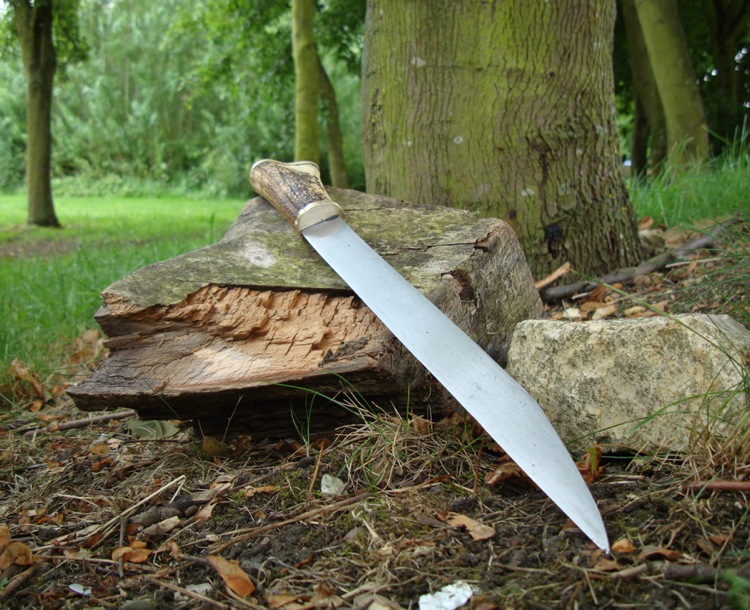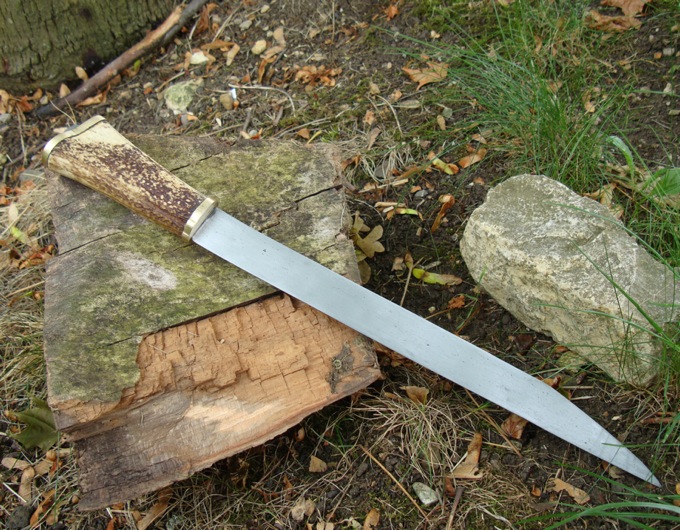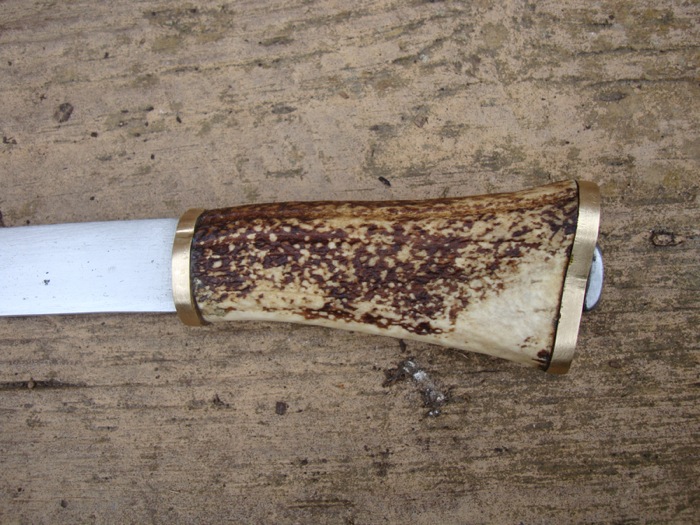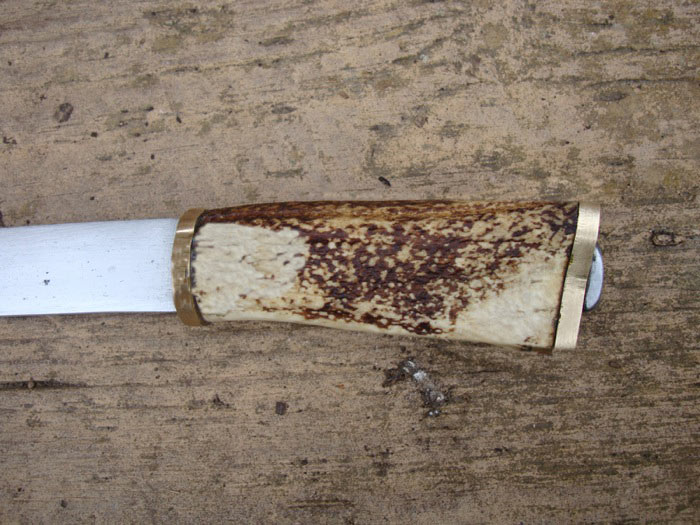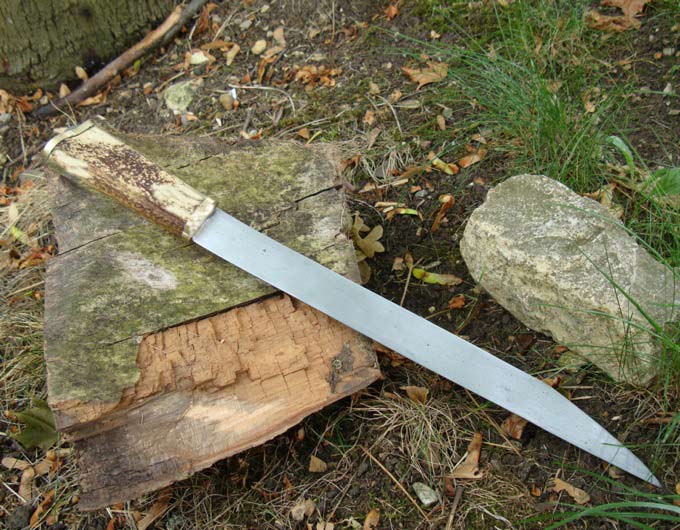It's about 19-20 inches long,and It has been made with materials that could be considered similar or close to what would have been available historically , it is a laminate of medium carbon steel cutting edge sandwiched between wrought iron, should make for a very tough blade, it's still hard enough to take and hold a good working edge too.
I would have liked to use bronze for the fittings for the sake of authenticity , however I was unable to obtain any at short notice for when I could steal some time in the workshop, so it is brass instead, the grip is red deer antler.
Cheers,
Matt
